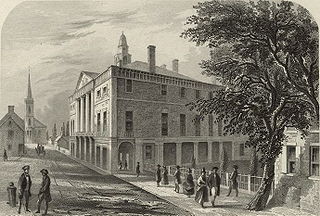
The 1st United States Congress, comprising the United States Senate and the United States House of Representatives, met from March 4, 1789, to March 4, 1791, during the first two years of George Washington's presidency, first at Federal Hall in New York City and later at Congress Hall in Philadelphia. With the initial meeting of the First Congress, the United States federal government officially began operations under the new frame of government established by the 1787 Constitution. The apportionment of seats in the House of Representatives was based on the provisions of Article I, Section 2, Clause 3, of the Constitution. Both chambers had a Pro-Administration majority. Twelve articles of amendment to the Constitution were passed by this Congress and sent to the states for ratification; the ten ratified as additions to the Constitution on December 15, 1791, are collectively known as the Bill of Rights, with an additional amendment ratified more than two centuries later to become the Twenty-seventh Amendment to the United States Constitution.

HM Customs and Excise was a department of the British Government formed in 1909 by the merger of HM Customs and HM Excise; its primary responsibility was the collection of customs duties, excise duties, and other indirect taxes.

The United States Revenue Cutter Service was established by an act of Congress on 4 August 1790 as the Revenue-Marine upon the recommendation of Secretary of the Treasury Alexander Hamilton to serve as an armed customs enforcement service. As time passed, the service gradually gained missions either voluntarily or by legislation, including those of a military nature. It was generally referred to as the Revenue-Marine until 31 July 1894, when it was officially renamed the Revenue Cutter Service. The Revenue Cutter Service operated under the authority of the U.S. Department of the Treasury. On 28 January 1915, the service was merged by an act of Congress with the United States Life-Saving Service to form the United States Coast Guard.

The United States Customs Service was a federal law enforcement agency of the U.S. federal government. Established on July 31, 1789, it collected import tariffs, performed other selected border security duties, as well as conducted criminal investigations.
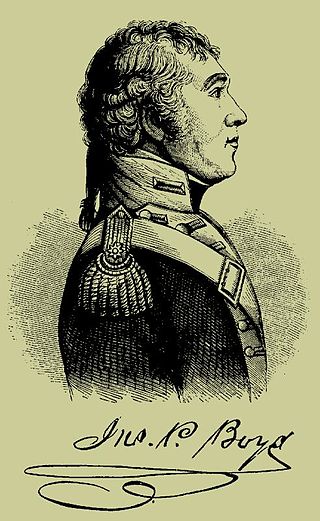
John Parker Boyd was an officer in the United States Army at various periods from 1786 to the end of the War of 1812. He attained the rank of brigadier general and commanded during the American defeat at the Battle of Crysler's Farm.

HM Customs was the national Customs service of England until a merger with the Department of Excise in 1909. The phrase 'HM Customs', in use since the Middle Ages, referred both to the customs dues themselves and to the office of state established for their collection, assessment and administration.

The Steamboat Inspection Service was a United States agency created in 1871 to safeguard lives and property at sea. It merged with the Bureau of Navigation in 1932 to form the Bureau of Navigation and Steamboat Inspection, which in 1936 was reorganized into the Bureau of Marine Inspection and Navigation. The Bureau of Marine Inspection and Navigation's responsibilities were transferred temporarily to the United States Coast Guard in 1942. The Bureau was abolished in 1946, when its functions were transferred permanently to the Coast Guard.
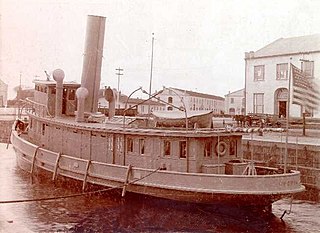
USRC Hudson, known for her service during the Battle of Cárdenas, was the United States Revenue Cutter Service's first vessel to have a steel hull and triple-expansion steam engine.
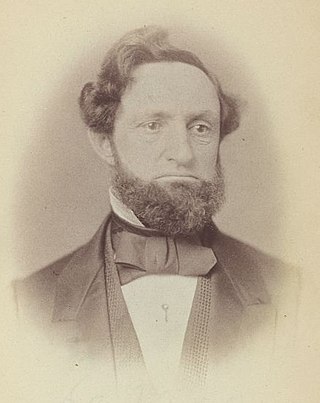
William Fiero Russell was an American banker who served one term as a U.S. Representative from New York from 1857 to 1859.

The Collector of Customs at the Port of New York, most often referred to as Collector of the Port of New York, was a federal officer who was in charge of the collection of import duties on foreign goods that entered the United States by ship at the Port of New York.
The Custom House in Boston, Massachusetts, was established in the 17th century and stood near the waterfront in several successive locations through the years. In 1849 the U.S. federal government constructed a neoclassical building on State Street; it remains the "Custom House" known to Bostonians today. A tower was added in 1915; the building joined the National Register of Historic Places in 1973 and was designated a Boston Landmark by the Boston Landmarks Commission in 1986.
The Tenure of Office Act of 1820, also known as the Four Years' Law, was passed on May 15, 1820 by the United States Congress, and purported to be "an Act to limit the term of office of certain officers therein named, and for other purposes". The author of the law was Secretary of the Treasury William H. Crawford; it was introduced into the Senate by Mahlon Dickerson of New Jersey.

Thomas Melvill or Thomas Melville was a merchant, member of the Sons of Liberty, participant in the Boston Tea Party, a major in the American Revolutionary War, a longtime fireman in the Boston Fire Department, state legislator, and paternal grandfather of writer Herman Melville.

The United States Custom House, sometimes referred to as the New York Custom House, was the place where the United States Customs Service collected federal customs duties on imported goods within New York City.
The United States Customs District of Salem and Beverly was an administrative area for the collection of import duties on foreign goods that entered the United States by ship at the ports of Salem and Beverly. Established in 1789, it was abolished in 1913. Today the ports of Salem and Beverly are serviced by the Port of Gloucester, which is administered by the Boston Customs District.
The United States Customs District of Barnstable was an administrative area for the collection of import duties on foreign goods that entered the United States by ship at the port of Barnstable, Massachusetts. Established in 1789, it was abolished in 1913. Today the port of Barnstable is administered by the Boston Customs District.
The United States Customs District of New Bedford was an administrative area for the collection of import duties on foreign goods that entered the United States by ship at the port of New Bedford, Massachusetts. Established in 1789, it ceased to be an independent district in 1913, but continues to operate as a port of entry.
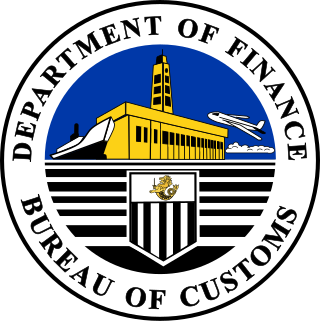
The Bureau of Customs is a Filipino government agency that is responsible for the collecting of customs duties, excise duties, and other indirect taxes in the Philippines. It is part of the Philippines Department of Finance.

Thomas Huse was an American attorney and politician from Newburyport, Massachusetts.

The Collector of Customs at the Port of Buffalo, most often referred to as Collector of the Port of Buffalo, sometimes referred to as Buffalo Creek, was a federal officer who was in charge of the collection of import duties on foreign goods that entered the United States by ship at the Port of Buffalo.